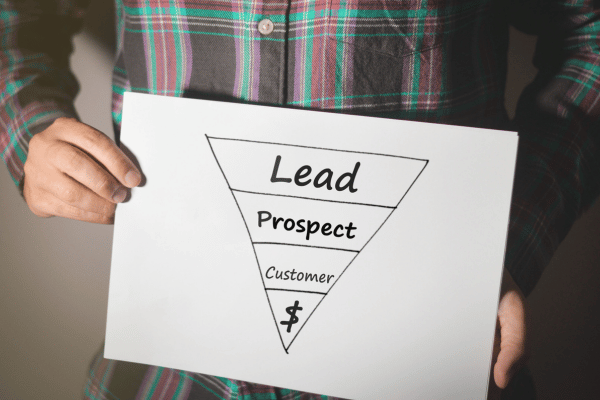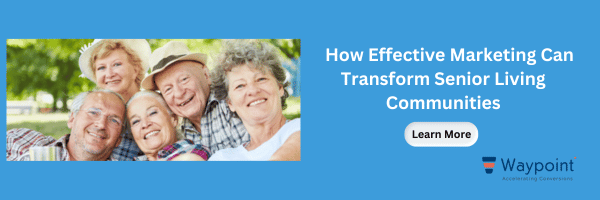
As the senior living industry continues to evolve, providers face the challenge of reaching and converting prospects in a competitive landscape. Creating an effective marketing funnel is essential for capturing the attention of older adults and guiding them through the decision-making process.
In this guide, we’ll explore key strategies to build a successful marketing funnel tailored to senior living communities.
Understanding the Senior Living Landscape
Before diving into the specifics of a marketing funnel, it’s crucial to grasp the unique dynamics of the senior living industry. With an estimated 27 million Americans expected to reside in senior living facilities by 2050, providers must differentiate themselves to attract this growing market. Challenges such as staffing issues, low-quality leads, and the necessity for revenue growth further emphasize the need for a well-structured marketing approach.

Building Awareness: The Top of the Funnel
The first stage of your marketing funnel is to create awareness among potential residents and their families. Leverage various channels, including social media, content marketing, and community outreach programs. Develop informative content that addresses the concerns and interests of older adults, positioning your community as a reliable resource.
Consider incorporating Waypoint’s Navigator solution into your online presence. This innovative tool allows users to explore content at their own pace, creating a unique and engaging experience. By implementing Waypoint, you can set the stage for a positive interaction, pulling prospects toward your brand instead of pushing them through a traditional marketing path.
Generating Interest: The Middle of the Funnel
Once awareness is established, focus on generating interest and nurturing leads. Provide valuable content that dives deeper into the benefits of senior living, the unique features of your community, and the quality of care offered. Interactive tools, like virtual tours and informative webinars, can further engage prospects.
Addressing the common pain points of the industry, Waypoint’s Navigator solution comes into play during this stage. By offering a customizable and embeddable solution, Waypoint enables prospects to find information at their own pace, ensuring a seamless journey through the middle of the funnel. This approach not only improves lead conversion but also enhances the overall prospect experience.
Encouraging Action: The Bottom of the Funnel
As prospects move toward the decision-making stage, it’s crucial to facilitate a smooth transition from interest to action. Provide clear calls-to-action, such as scheduling in-person tours, contacting your sales team, or attending community events. Emphasize the unique selling points of your senior living community and address any concerns prospects may have.
Waypoint’s Navigator solution proves instrumental in this final stage. With traditional website forms converting at just 2%, Waypoint’s Navigator boasts an impressive conversion rate of up to 10%. This not only signifies a more cost-effective acquisition but also ensures that the prospects reaching this stage are of higher quality. Integrating Waypoint into your bottom-of-the-funnel strategy can significantly contribute to increased move-ins and revenue generation.
Measuring Success and Adapting
A successful marketing funnel doesn’t end with conversion—it involves continuous measurement and adaptation. Track key metrics such as conversion rates, lead quality, and move-in rates. Use this data to refine your strategies, optimizing the marketing funnel for ongoing success.
Creating a marketing funnel for senior living communities requires a strategic approach that addresses industry challenges and prioritizes the prospect’s experience. Waypoint’s Navigator solution offers a powerful tool to enhance this journey, from building awareness to encouraging action. By incorporating these insights into your marketing strategy, you can position your senior living community for sustained growth and success in a competitive market.
Strategies to Building a Strong Marketing Funnel
Building a strong marketing funnel for senior living communities requires strategic planning and careful execution. Senior living communities need to be able to connect with their target audience and guide them through the decision-making process. This involves creating:
- A comprehensive marketing plan that includes identifying key demographics
- Developing meaningful messaging, and
- Leveraging appropriate marketing channels.
Once seniors and their families show interest in your community, providing them with valuable content and resources to keep them engaged and informed is important. This can include information about your community’s amenities, resident life, and staff expertise.
Benefits of Creating a Dedicated Marketing Funnel for Senior Living Communities
Creating a marketing funnel for senior living communities is a strategic approach that offers numerous benefits, helping to attract, engage, and convert potential residents into long-term residents. A marketing funnel is typically used for guiding leads through a funnel or a pipeline. Here are some key benefits of implementing a marketing funnel for senior living communities:
1. Targeted Outreach and Awareness
By structuring a marketing funnel, senior living communities can tailor their outreach efforts to target specific demographics and individuals who are more likely to be interested in their services. This targeted approach helps in creating awareness among the right audience, increasing the chances of attracting qualified leads.
2. Building Trust and Credibility
The decision to move into a senior living community is a significant and often emotional one for both seniors and their families. A well-designed marketing funnel allows for the gradual building of trust and credibility. Providing valuable content, testimonials, and educational materials at different stages of the funnel helps establish the community as a reliable and trustworthy choice.
3. Educating Prospective Residents and Families
Senior living communities often need to educate potential residents and their families about the services and lifestyle they offer. A marketing funnel allows for the systematic delivery of informative content, addressing common concerns, providing insights into daily life, and showcasing the unique features of the community. This educational aspect is crucial for helping prospects make informed decisions.
4. Nurturing Relationships
A marketing funnel includes a nurturing process where leads are gradually guided through the decision-making journey. This nurturing involves ongoing communication, personalized interactions, and the provision of relevant information. Building relationships with potential residents and their families helps in understanding their needs and concerns, creating a more personalized and empathetic experience.
5. Optimizing Conversion Rates
The funnel structure enables continuous monitoring and optimization of conversion rates at each stage. By analyzing data and feedback, senior living communities can identify areas for improvement and implement strategies to enhance the conversion process. This optimization leads to more efficient and effective marketing efforts.
6. Cost-Effective Marketing
A well-structured marketing funnel allows communities to allocate resources more efficiently. By focusing on targeted outreach and optimizing conversion rates, marketing efforts become more cost-effective. This is particularly important for senior living communities, as marketing budgets can be substantial, and optimizing ROI is essential.
7. Measurable Results and Analytics
One of the significant advantages of a marketing funnel is the ability to measure results and gather valuable analytics. Communities can track the performance of various marketing channels, understand the behavior of their audience, and make data-driven decisions to enhance their overall marketing strategy.
8. Streamlined Sales Process
The marketing funnel seamlessly integrates with the sales process, providing a clear path for transitioning leads from marketing to sales. This streamlined approach ensures that the sales team is equipped with qualified leads who have been adequately nurtured and are more likely to convert into residents.


